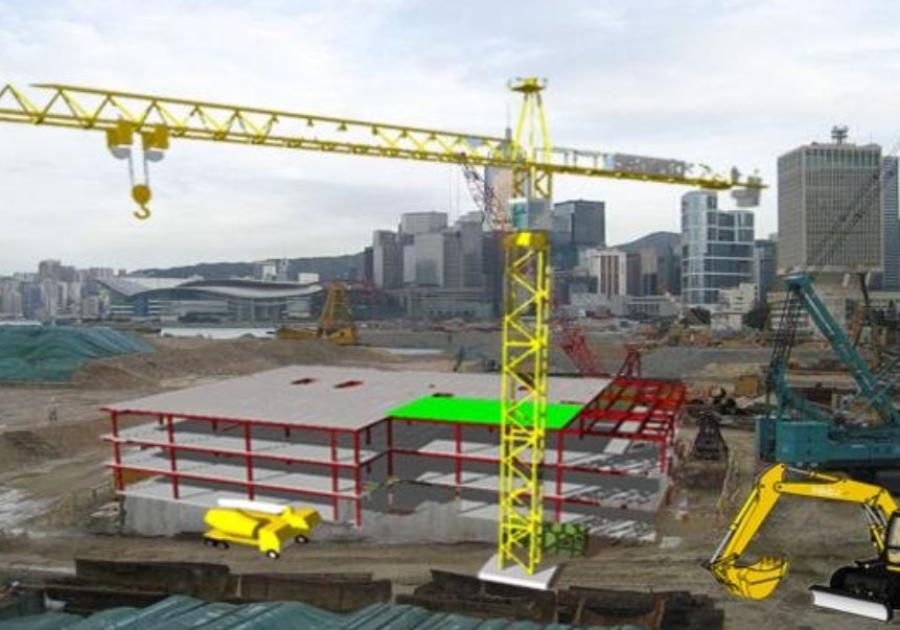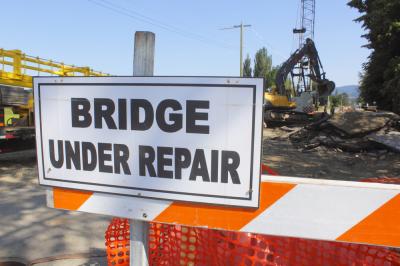Augmented reality, often considered merely gaming technology, is coming to the construction industry.
Augmented reality, often considered merely gaming technology, is coming to the construction industry.
In 2015, a close-knit team in Palo Alto, Calif., founded Grid Raster Inc., a provider of cloud-based XR platforms that power high-performance and scalable AR/virtual reality/mixed reality experiences on mobile devices.
Grid Raster provides an open architecture cloud-based XR platform that allows its customers to realize the full potential of AR/VR applications across the product's lifecycle. It leverages three core technical breakthroughs — distributed computing, low-latency remote rendering and 3-D Artificial Intelligence-based Spatial Mapping — to enable high-performance, high-precision, high-quality immersive experiences at scale.
Fusion of the virtual and real worlds is achieved using 3-D vision-based AI from a camera and depth sensors.
The platform provides a seamless API-based integration with existing content formats, applications and devices, making it a cross-platform solution that fits into the current content ecosystem of its customers, helping them improve productivity, reduce costs and increase revenue, according to the manufacturer.
Genesis of An Idea
Co-founders Rishi Ranjan, Dijam Panigrahi and Venkat R. Dass bring a combined 60 years of experience in building, deploying and taking to market multiple defining technologies such as 2G/3G/4G/VOIP at Qualcomm, Broadcom, Texas Instruments and Cisco.
In their previous roles, Panigrahi said, they worked on enabling the infrastructure required to support the next generation applications, such as AR/VR.
"We knew firsthand how the computer and network infrastructure is evolving, how the mobile devices are evolving and how the capabilities of cloud computing are evolving. We had some insights on how we can enable high-quality AR/VR experiences on low-end devices by leveraging cloud computing and taking care of the technical challenges in doing so."
Thus, they decided to get together and start Grid Raster.
They had been working with automotive, aerospace & defense and heavy construction equipment companies since the second half of 2018.
"It all started when the companies realized the challenges to bring high-fidelity immersive experience on mobile devices," Panigrahi said.
What Is AR?
Briefly, augmented reality relays essential information to the user about what is physically in front of them. As Forbes explains, this reduces the time engineers, technicians and maintenance personnel need to consult manuals or look up information while they're performing work.
The longer explanation is that AR comprises a set of technologies that transforms data and analytics into images it then superimposes over the real world. Familiar examples include Snapchat filters and Pokemon Go. It also is being used in some automotive navigation systems, military jets and commercial airlines to display warnings and other information in the driver's/pilot's sight line. The Harvard Business Review predicts that AR will become the new interface between humans and machines, replacing traditional manuals.
Currently, most AR applications are accessed through mobile devices, but delivery is expected to shift to hands-free devices, such as head-mounted displays or smart glasses. This will allow people to bridge the knowledge gap from 2-D instructions to 3-D applications more easily, providing a significant improvement of quality and productivity with fewer errors because it enables users to visualize better, allowing them to more accurately follow instructions.
With AR, users can see internal features virtually, enabling them to better understand how parts are configured for repair. This real-time, interactive visual guidance replaces time-consuming standard instructions, whether written or video. It may also replace in-person training, which is costly and inconvenient.
AR adds value by increasing efficiency and productivity. The Harvard Business Review had predicted spending on AR technology to hit $60 billion in 2020 as it begins to impact every industry, transforming the way we interact with the physical world, learn, design and create items, serve customers and more, even while the underlying technology itself is still evolving.
What AR Can Do
By superimposing 3-D models on the physical world, AR can assist computer-aided design capabilities. Similarly, by superimposing CAD models on physical prototypes, engineers can compare the alignment and correctness of the design much faster than comparing 2-D drawings with a prototype.
Mixed reality powers real-time remote augmentation to enable high-poly complex models and contents to effectively run on mobile devices. It enables realistic product visualization and remote collaboration to create a virtual environment close to real-world experience for remote maintenance, repair and training.
The Harvard Business Review anticipates AR-enabled devices (such as phones and smart glasses with embedded cameras, accelerometers, GPS and other sensors) will assist product design by providing data about when, where and how customers use the product.
Benefits of Use in Construction
In the construction industry, AR/VR was first used in customer sales and marketing to allow the customer to visualize and configure heavy equipment and training personnel in VR. Then, it started to be used across the product life cycle: design and engineering, operations, repair and maintenance, training and customer sales. Today, Panigrahi said that due to the pandemic, AR/VR as a medium has become even more important to "ensure business continuity and bring in efficiency and productivity."
For example, as engineers work from home, they can collaborate in VR to continue design and engineering work, remotely train technicians in VR, allow customers to visualize and configure construction vehicles virtually from anywhere and use AR to support remote repair and maintenance of equipment and assist the engineers at the shop floor in operation.
Grid Raster's platform provides benefits to contractors, including:
- High Performance: It supports high-fidelity and large VR/AR/MR environments. No decimation or optimization of 3-D assets required, which saves time and money;
- API-based Integration: It easily integrates with existing 3-D Unity and CAD/CAM assets — and allows reuse of 3-D assets;
- Device Agnostic: It provides support across leading devices and OS, making it future-proof; it even offers multi-platform/cross platform support;
- Highly Scalable: It seamlessly scales, based on asset, usage and location; and
- Highly Secure: It provides multi-level security that addresses authorization, access and encryption.
Additional benefits include increased productivity, Panigrahi said.
"The platform capabilities and benefits translate into saving time and money in bringing 3-D assets for product visualization."
AR supports multiple users for better collaboration and sharing.
Grid Raster reports that nearly one-third of all companies polled indicate at least a 25 percent increase in productivity, with 61 percent seeing as much as 20 percent savings in costs due to use of AR/VR technology.
Safety is another aspect that is enhanced by the use of AR, in part because it increases accuracy, effectiveness and efficiency in repair and maintenance of construction equipment, eliminating errors and potential mishaps.
"By enabling ultra-realistic training in synthetic environments [VR], it allows personnel to train [for] any dangerous scenarios in a virtual environment without any risk to the trainee," Panigrahi said.
Learning Curves, Limitations
Productivity affects the return on investment. While the ROI differs across various applications, Panigrahi expressed astonishment about some of the results, which include productivity increases of 40 percent in manufacturing process and repair and maintenance.
"We are seeing that some of the design processes that take months to complete now get done in days or weeks."
It takes practice, but many entry-level technicians perform at expert level using AR-assisted work instructions — an accomplishment that would normally take four to five years to reach.
"What we have seen is that the young engineers/technicians are more willing to adopt the technology than those who have been there longer in the construction industry," Panigrahi said. "It does take time to get used to the new medium and gestures and controllers, but the benefit they see from the use of the technology drives them to continue to use it."
Although the more proficient or experienced designers, engineers and technicians are initially more reluctant to use the technology, Panigrahi said once they start using it, they are more excited about using it. "This is primarily because they realize the value the medium brings, as they are painfully aware of the challenges AR/VR solves for them."
Grid Raster works on any commodity AR/VR hardware. The only requirement is the server or cloud should have GPUs that can support AR/VR experiences, such as Nvidia RTX series.
Most of the limitations involve device display, network bandwidth and quality of connection.
"While we have the capability to support 4K-and-above resolution and more than 60 frames-per-second on the mobile device, we are limited by current device capability of 2K resolution and 60 FPS," Panigrahi said.
At this time, the number of users they can support concurrently is confined by WiFi bandwidth and the quality of connection available.
"As 5G gets deployed, we can seamlessly scale to support thousands of users concurrently," he said.
Looking Ahead
"The cloud-based immersive experience is at a very early stage," Panigrahi said, "but will be fundamental to large-scale adoption and usage of AR/VR, not only in the construction industry, but also across most industries."
He said Grid Raster plans to continue building on its open-architecture approach and working toward a more modular service architecture that will allow its customers to use the best technology available in the market.
"We plan to combine the best of the gaming concepts and technologies with traditional simulation capabilities to provide our customers the best-in-class simulations and training environments."
Additionally, they will continue to take advantage of convergence of AR/VR technologies, cloud, 5G and AI to build truly intelligent high-performance spatial computing platforms that seamlessly transition between various immersive experiences.
"As we work across multiple industries, we are bringing some of the learning and insights from other industries to benefit the construction industry," Panigrahi said, adding that they will continue to push the boundaries of innovation in cloud-based immersive experiences. CEG
Today's top stories























